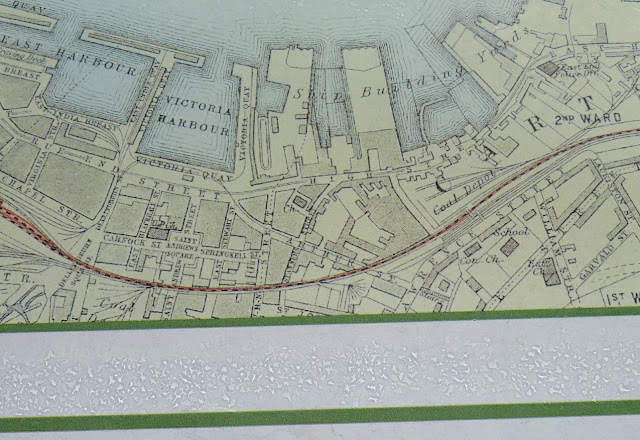On 1 September 1908 the four-masted
barque Amazon of Greenock was wrecked on Margam Sands near Port Talbot. Owned
by Robert Hill of Greenock, the Amazon was carrying a cargo of 3,000 tons of coal bound
for Iquique in northern Chile. Commanded by
Captain A Garrick and manned by a crew of 28 men, she left Port Talbot on 31
August.
Due to increasingly bad weather Amazon put back into Swansea Bay. Next morning high winds snapped on of the ship's cables and she
started to drift. The Captain decided to
try to make it back to Port Talbot, but the wind was increasingly strong (later
described as hurricane force). The crew
tried to ready the ship's lifeboats but the wind was so strong that they were
blown off and some of the crew injured and some were washed overboard.
The Amazon eventually beached on Margam
Sands, and began to break up. Some of
the crew could be seen attached to the main mast and rigging, but no one could
get near enough to help because of the atrocious weather. A newspaper reported -
"It was felt that as long as the mast
remained there would be a chance of rescuing the crew, but suddenly a wild
shriek of agony was heard as the mast was seen to topple over and, as far as
could be judged, some twenty-five men were thrown into the surging surf."
The shore authorities had alerted the
Coastguard and a tug sent out to try and help.
Rockets were fired to try and get a rope across, but those attempts
failed. The lifeboat could not get near
enough but could see that all was lost, however, they managed to save two crewmen.
Six of the crew managed to swim ashore. Local people bravely did their best to help the stricken men and give aid to those who survived. Twenty men, including the Captain were lost.
Of the twenty who died, four were
Greenockians -
Alexander Crawford, sailmaker of 28 Tobago
Street, Greenock
Edward Hendry, seaman, 1 Bogle Street,
Greenock
William Lamont, carpenter, 37 Roxburgh
Street, Greenock
John McLean, steward, 68 Wellington Street,
Greenock
The names of the others who died were -
Captain Arthur Garrick of Penarth (just west of Cardiff), J Logan, Second Mate, Joseph Marien, Ship's cook, Sydney
G. Evans, Ordinary seaman,
Charles E. Kie, Arthur M. Pillans, John
Flynn, G. Wright, James Hendry, G. Baker , G. Kent, James Deacon and Patrick Morgan. The Amazon carried five apprentices, all lost
- James Robertson (Leith), Robert L Hendry (Edinburgh), Reginald B. Mayes, Alan
F. Orr and Neil C. McLeod. Those saved
were - Halley, Adams, Evans, Nolan, Christensen, Wickenberg, Sullivan and
Lockwood. At the end of October 1908 a Board of Trade enquiry was held at the Town Hall, Swansea into the loss of the Amazon.
Some of the wreckage can still be seen on Margam Sands as you can see in this photograph by Gareth James.
Some of the wreckage can still be seen on Margam Sands as you can see in this photograph by Gareth James.
 |
© Copyright Gareth James and licensed for reuse under this Creative Commons Licence
|





































